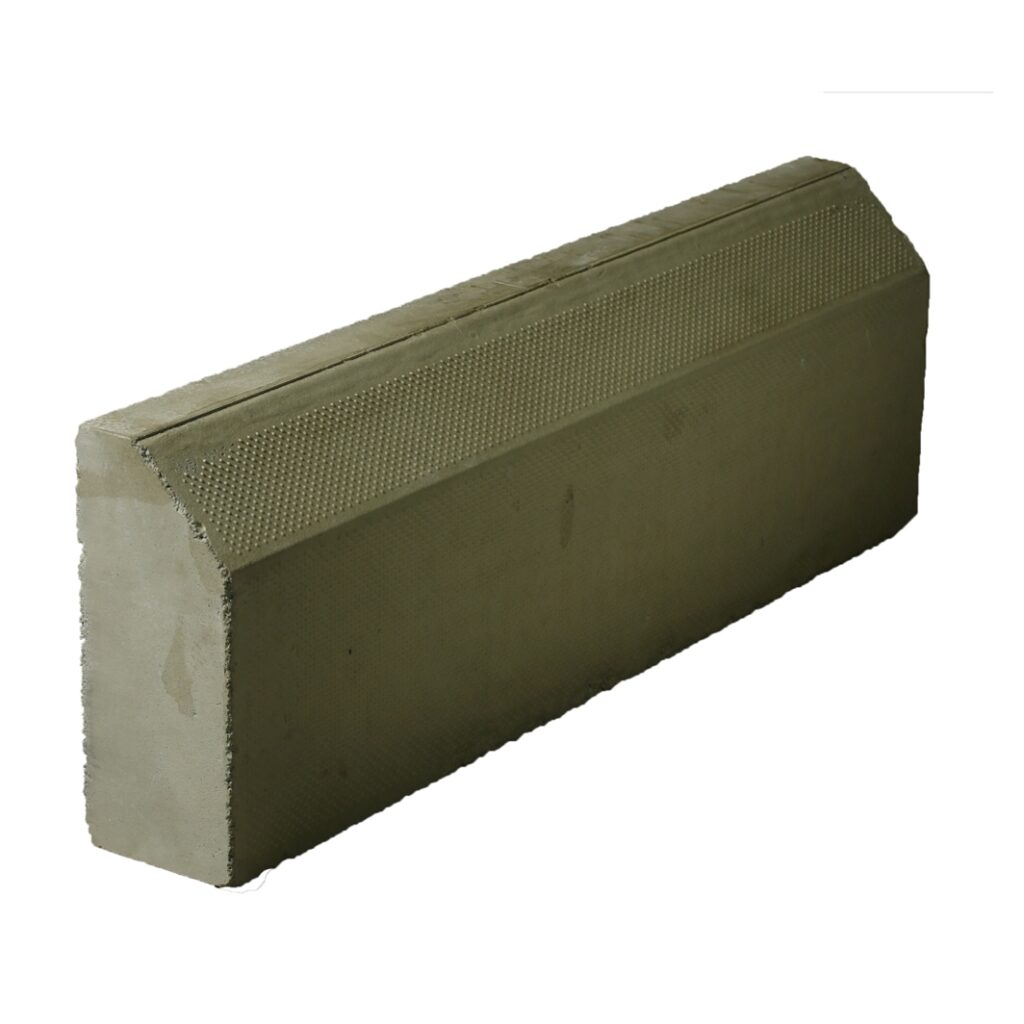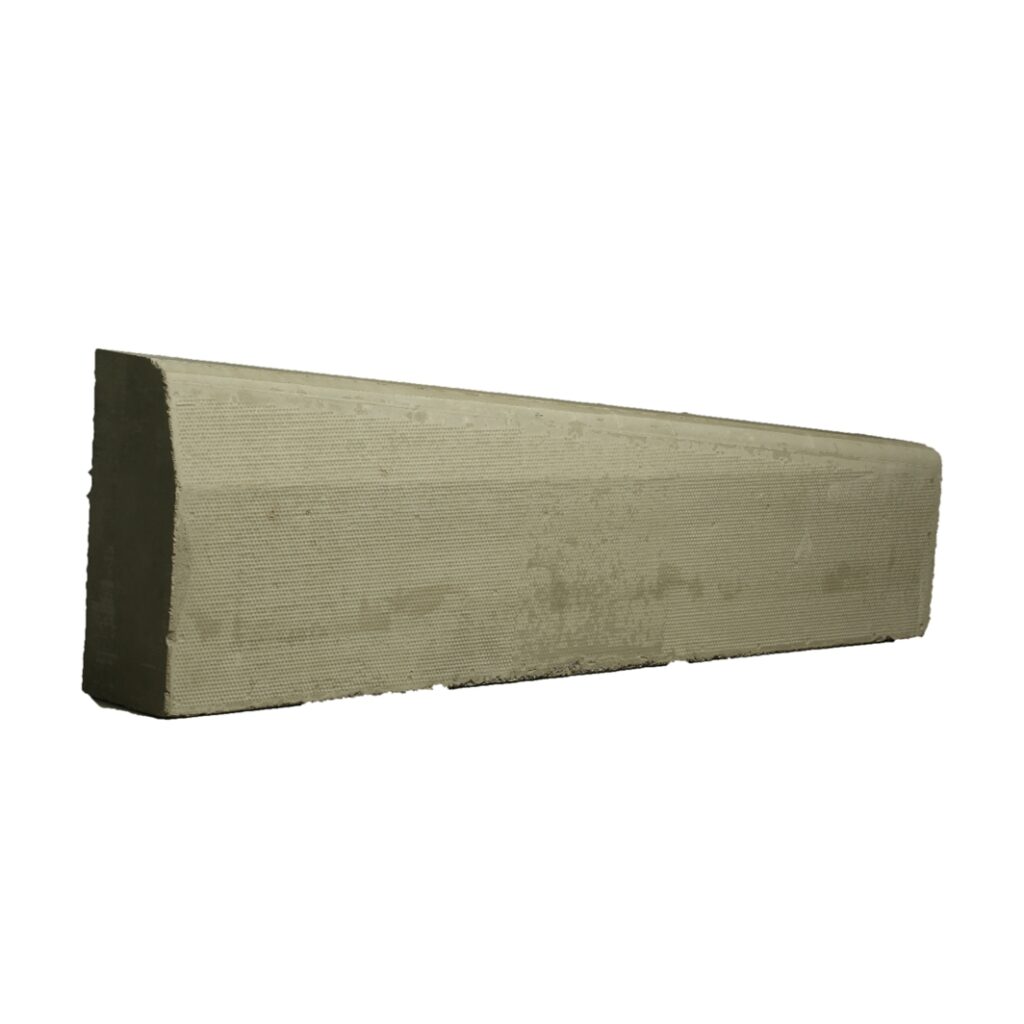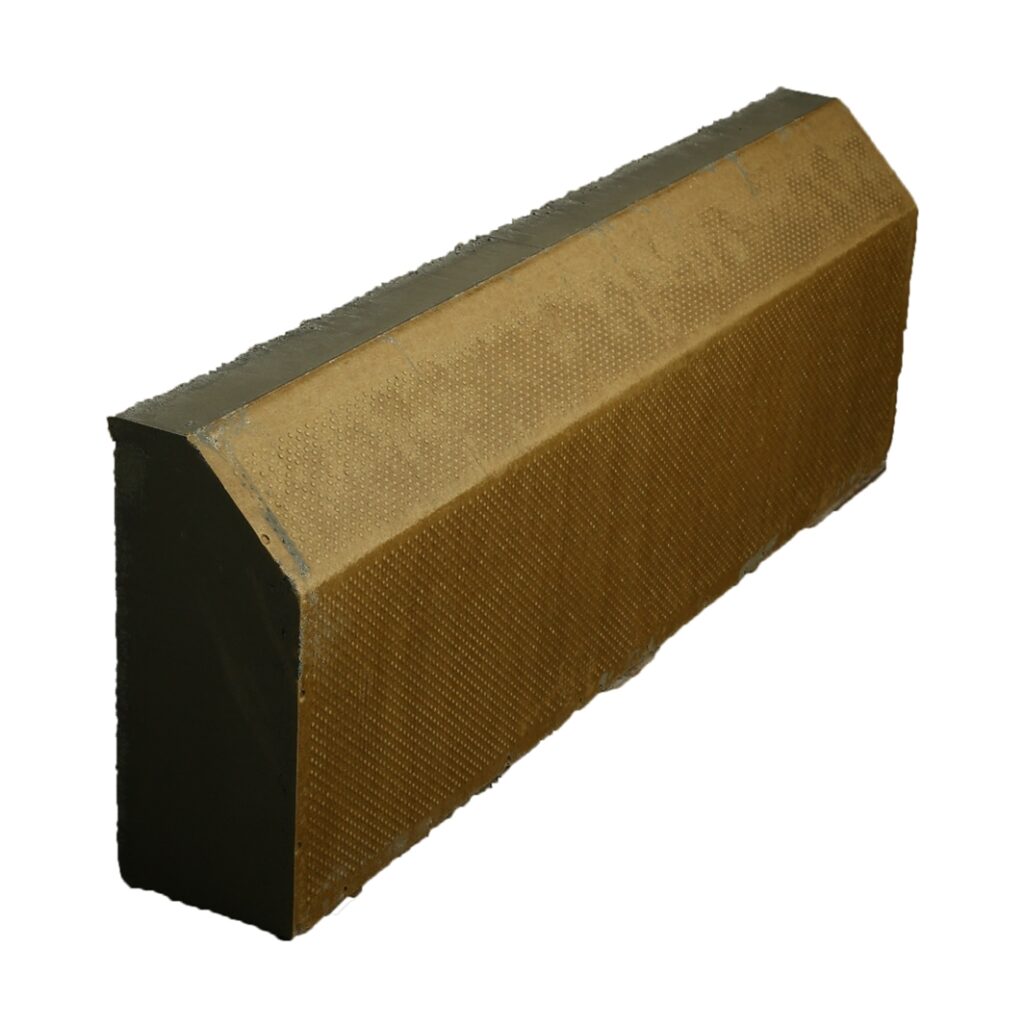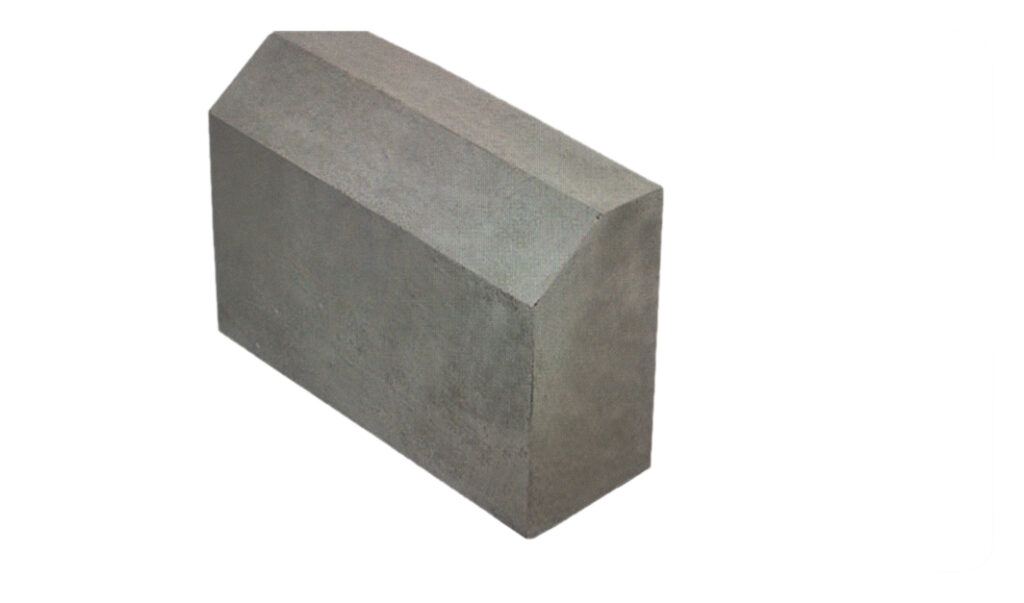KERBS
- Kerb forms an edge or a short wall between a pavement and a roadway. It is installed to hold the raised pavement from the sides and act as a barrier between both.
- Kerbs are often produced as solid, un-reinforced, precast cement concrete units in a variety of heights, widths, lengths (up to 1m), and profiles/shapes to conform with local standards or requirements.
- Kerbs add to the attractiveness of walkways, footpaths, parking lots and streets by providing neat, straight lines and sharp demarcations between them.
- Kerbs strengthen pavements by confining of flexible pavements made from Paver Blocks, enabling improved compaction during construction, and helping maintain the integrity of edges under traffic.
- The added thickness given to edges of concrete pavements by integral Kerbs increase strength and stiffness, reduce deflections induced by traffic loads, and therefore extends pavement life.
- Kerbs assist with storm water drainage and are usually constructed along with Drainage Channels on roads and highways.
- PBMA members provide Kerbs in a variety of shapes, sizes, colors, and finishes.
- Reference Standard: IS: 5758 – 2020 Specification For Precast Concrete Kerbs, Channels, Edging, Quadrants & Other Associated Fittings (Download Key Information in pdf).
Comparison of Vacuum Wet Press Kerbs with Rubber/PVC Moulded Kerbs (Download pdf)
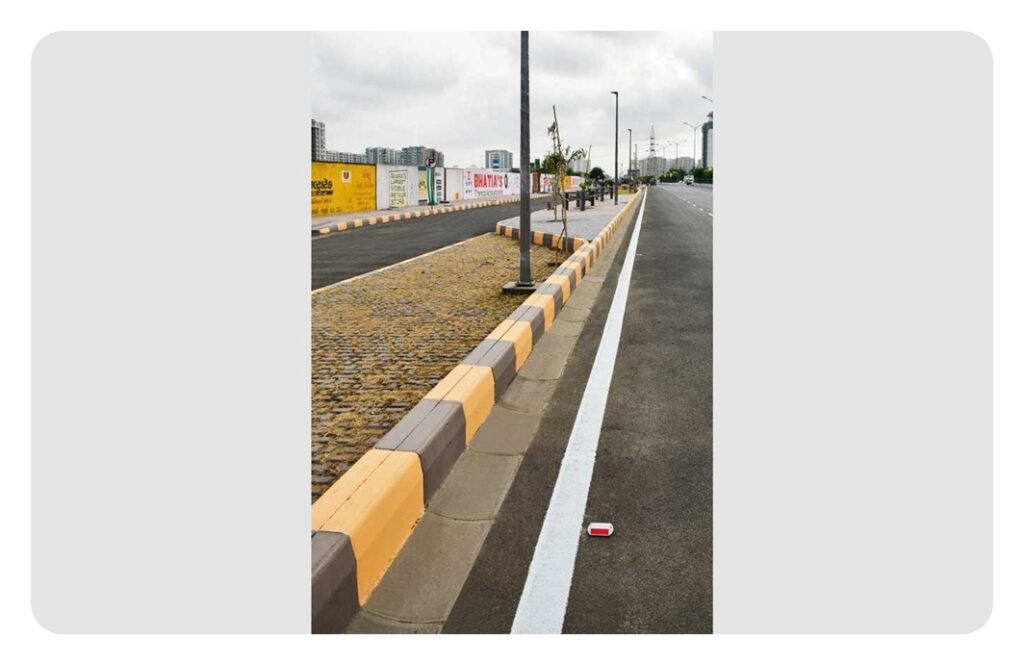
Courtesy: Vyara Tiles 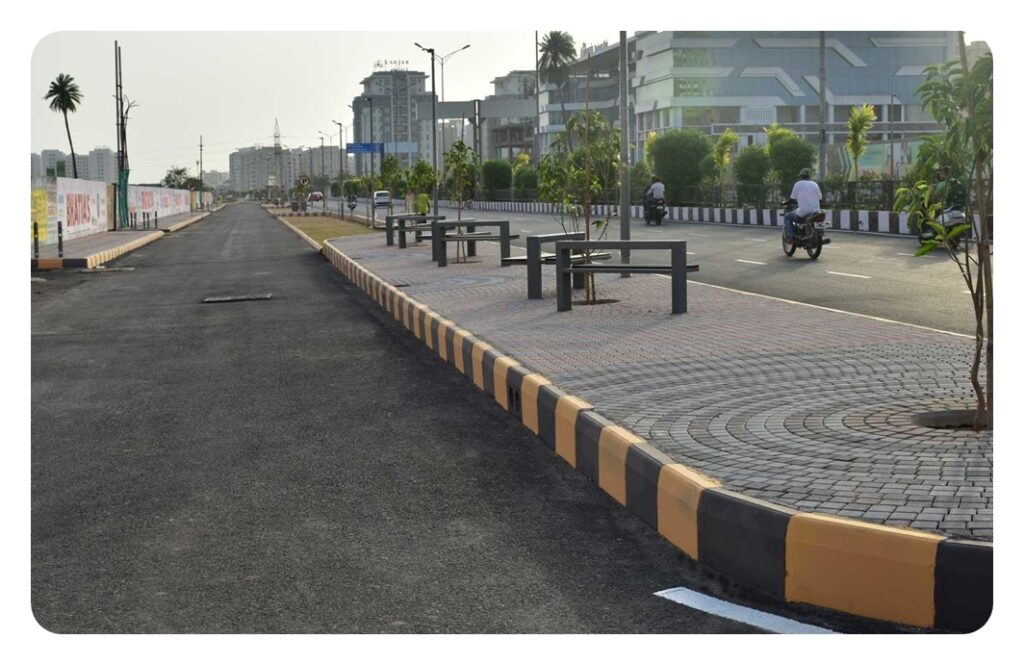
Courtesy: Vyara Tiles 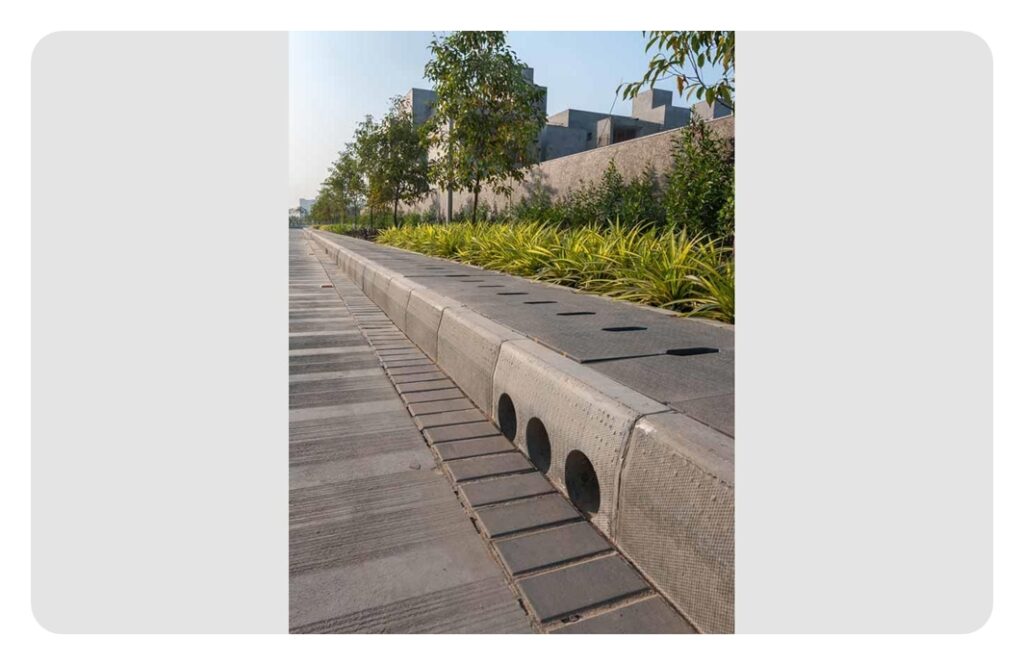
Courtesy: Vyara Tiles

